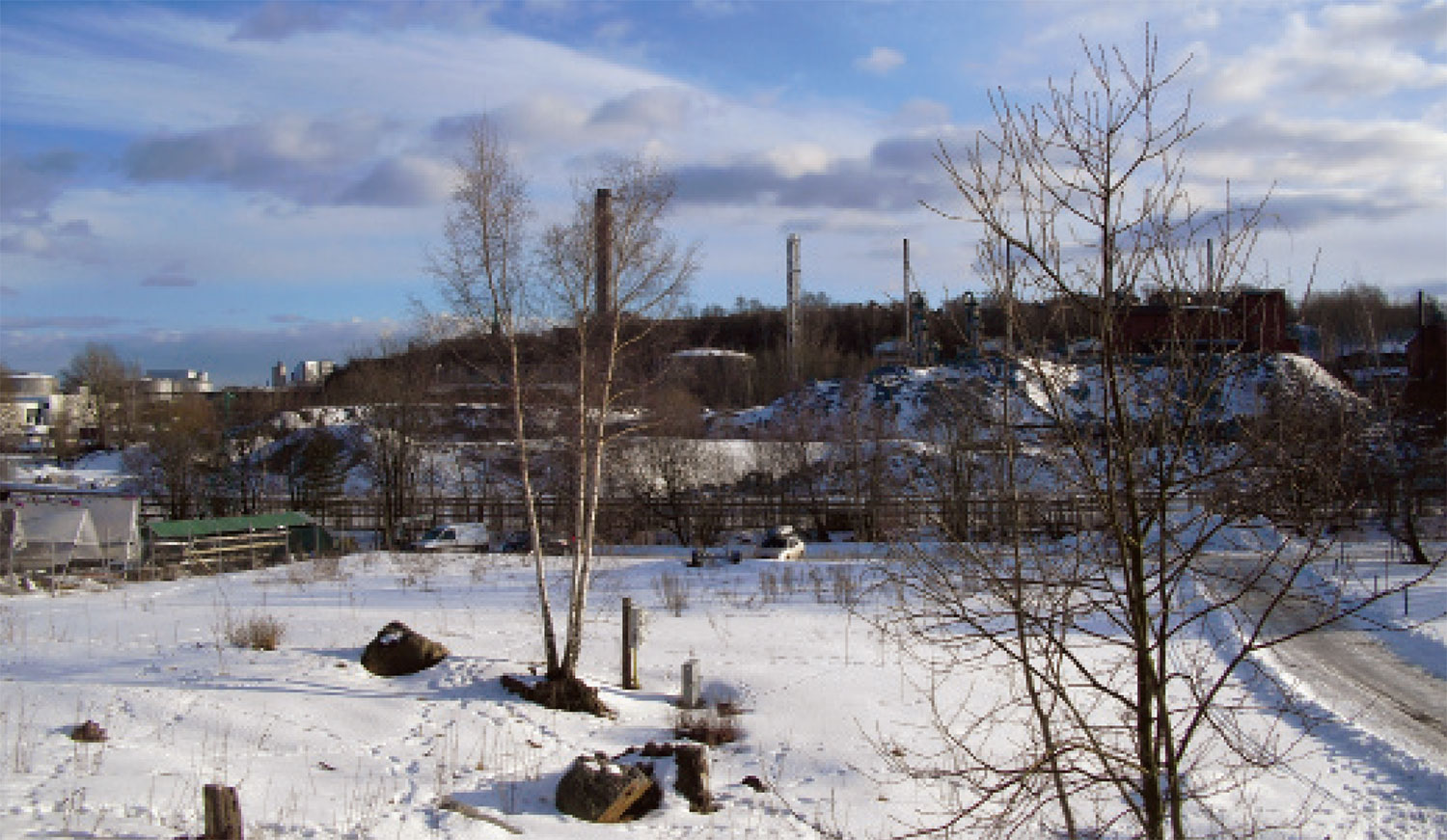Formerly a brownfield site, the Stockholm Royal Seaport is designed to be a world-class waterfront urban district with a strong focus on sustainability. When completed in 2030, it will provide 10,000 apartments and 30,000 workspaces. Construction started in 2010, and the first apartments will be occupied in 2012. The Stockholm Royal Seaport aims to be a diverse neighborhood combining offices and climate-adapted housing with a green inner-city character. Its environmental targets are ambitious. For example, carbon dioxide emissions are expected to be below 1.5 tonnes per person by 2020 (as to compared to the Stockholm average of 3.4 tonnes per person in 2009, and the City’s general target of 3 tonnes per person in 2015). By 2030, the target is for Stockholm Royal Seaport residents to be fossil fuel-free. All neighborhood development will also be adapted according to the prognosis for future sea-level rise.
To meet environmental targets, the neighborhood will provide public transport in the form of subway, biogas-powered buses, tram, and boat buses. It includes a closed-loop integrated waste management system and LEED certified buildings. The area is prepared for a future smart grid electrical system. The Stockholm Royal Seaport also represents an investment to market Swedish solutions for sustainable development.
STRATEGIC PARTNERS
Local government, private business (energy producers, cruise ship operators, banks, clean-tech companies), the Port of Stockholm.
FINANCING
The City of Stockholm is investing around $150 million in the project. The biggest costs for the city are cleaning polluted soil, compensation and evacuation of affected stakeholders in the area, as well as groundwork and infrastructure. Any land to be build up was to be owned by City of Stockholm; desirable lots were then sold to private developers on the condition that development complies with the environmental targets. Given the quality of the land, no further financing incentives were needed to attract private developer interest. The developers cover their costs by selling the apartments at high prices. A pilot smart grid system is being installed under a new model of collaboration between the private sector, academia, and local government. This joint venture was additionally sponsored by the Swedish Energy Agency and the Swedish Governmental Agency for Innovation Systems.
BARRIERS TO IMPLEMENTATION
SOCIAL
In order to finance the project, the City of Stockholm sold the land to private developers at a very high price. Developers are now selling apartments at a high price, limiting lower-income residents from investing in the area and reducing diversity of income.
CONFLICTING TARGETS
Cruise ship traffic is very important economically to Stockholm, creating around 4,000 full-time jobs. However, cruise ship traffic isn’t very environmentally sustainable, contributing to greenhouse gas emissions and eutrophication of the Baltic Sea, and threatening marine life.
 LESSONS LEARNED
LESSONS LEARNED
Stockholm Royal Seaport is a neighborhood-in-progress, so lessons learned are based on planning and design rather than actual performance. But with implementation underway, there are several key lessons from the planning process.
COMPETENCE PROGRAM FOR PRIVATE DEVELOPERS
A lesson learned from Hammarby Sjöstad was that the environmental program must come in at an early stage in order to make the implementation phase easier. This is done through a competence program, where city planners, architects, and private developers exchange knowledge so that all actors can plan their work according to the environmental targets set for the project. This competence program is, for the City of Stockholm, celebrated and considered to be a real success story in the planning process.
WORKING WITH SUSTAINABILITY IN A NEW NEIGHBORHOOD
Real estate agents selling the apartments must be very clear that the area is designated a sustainable district. Planners from the city have worked to ensure that information about what this entails is provided to real estate agents. Since Stockholm Royal Seaport is not a community-driven project, but a project initiated by the city itself, communication of the sustainability profile to prospective residents is essential. A housing manual for the new apartments with information on how to live more sustainably. It is still too early to tell if their educational efforts will have the desired effect.
SYSTEMS APPROACH TO MEET ENVIRONMENTAL TARGETS
The Hammarby Sjöstad model has been applied to this project, meaning that district heating, sewage treatment, biogas production, and waste management are being linked into an integrated system, contributing to closing the loop on resources.
MOBILITY
In order to achieve the environmental targets for this project, a fully functioning transport infrastructure must be in place when the first residents move in. The infrastructure is achieved in several steps. One line of the Stockholm metro system already serves the area, and walking lanes to the existing metro have been improved. At a later stage, biogas-fueled buses will complement the metro service, and the existing tram network will be extended out to the newly built area.
REFERENCES
- City of Stockholm, Stockholm Royal Seaport – Vision 2030.
- City of Stockholm. 2009. Utsläpp av växthusgaser (produktionsperspektiv) – Stockholms miljöbarometer [Retrieved April 17, 2012].
- Carlsson-Mård, Daniel. 2012. Project communicator – Stockholm Royal Seaport. Development administration at the City of Stockholm.
- Stockholms Hamnar. 2009. Färjeresenärernas betydelse för Stockholmsregionen 2008/2009.
- Student report. 2011. Visioning and implementing the Stockholm Royal Seaport – A synthesis of the planned implementation strategies and their compliance to the Stockholm Royal Seaport vision, Dept. Physical Geography and Quaternary Geology. Stockholm University.
Download

